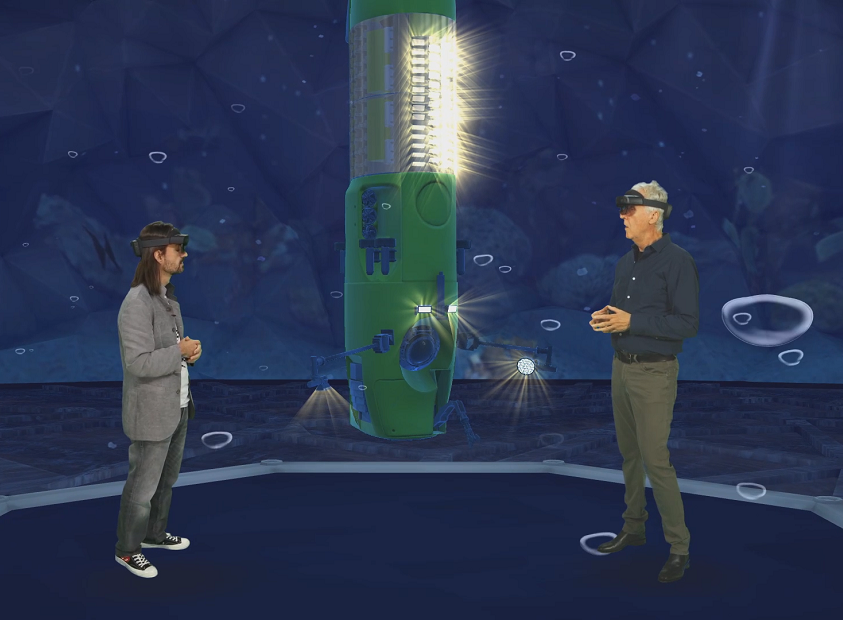At its Ignite event this week, in addition to announcing
a host of Teams updates, Microsoft expounded on its vision for the future of remote work. Strap on the virtual reality (VR) goggles, it’s futuristic.
As described in a keynote presentation, Microsoft’s vision centers on the newly introduced Mesh, technology for enabling shared experiences from anywhere and on any device through mixed reality applications. In
a post earlier today, Tom Brannen, industry analyst for OnConvergence, dived into the announcement details and gave his assessment of what Mesh can mean for the UC industry. With Mesh, he said, developers can integrate virtual reality (VR) and augmented reality (AR) into collaboration and business applications, extending the technology’s focus beyond gaming and entertainment.
While Microsoft is a technology juggernaut, it isn’t the only company looking to bring virtual and augmented reality to the enterprise. Technology startup PORTL has designs for a VR future in the enterprise, too, as my colleague Dana Casielles, No Jitter associate editor,
wrote about last week on our sister site, WorkSpace Connect. Using a combination of hologram technology, cloud-based software, and proprietary content management, PORTL will be able to beam a holographic depiction of a meeting participant from their current location to a rectangle-shaped PORTL box within the conference room or elsewhere at a distant site. Casielles provided the example of how a CEO living in Silicon Valley would be able to beam into the East Coast headquarters for a team meeting.
In the hybrid work model of the future, VR/AR could potentially serve as a bridge between in-office and virtual work, livening up the typical meetings and doing away with staring listlessly into a screen for hours, Brannen wrote for No Jitter. The need to introduce some fun into the workplace is definitely a lesson learned from a year of COVID-19, as Melissa Marsh, founder and executive director at PLASTARC, a social research, workplace innovation, and real estate strategy firm, pointed out in another
recent WorkSpace Connect post. This seems ripe for VR/AR. What’s more fun than having your next meeting under the sea (or in space)?
But the question is: Is VR/AR a workplace priority, and what about the productivity benefits? At face value, the idea of equipping every knowledge worker with a VR/AR headset seems a bit of a reach. However, Microsoft Ignite keynoter Alex Kipman, a technical fellow at Microsoft, noted that 50% of Fortune 500 companies already purchased HoloLens2, though he didn't specify a breakdown by use case.
And what about the fear of creating a two-class system between remote and in-office workers, which I discussed in
my latest WorkSpace Connect post? If workplaces are committing to VR for certain user personas, they need to ensure that all employees of that category have VR tools, regardless of whether they work at home or in the office. Otherwise, companies could end up with a situation of VR haves vs. have-nots.
It’s still too early to tell if VR/AR will become as ubiquitous as cloud videoconferencing or team collaboration apps. But for now, vendors like Microsoft and PORTL will push ahead with their VR dreams, while enterprise IT leaders will have to decide if the dream of a pixelated workplace is a high priority.











